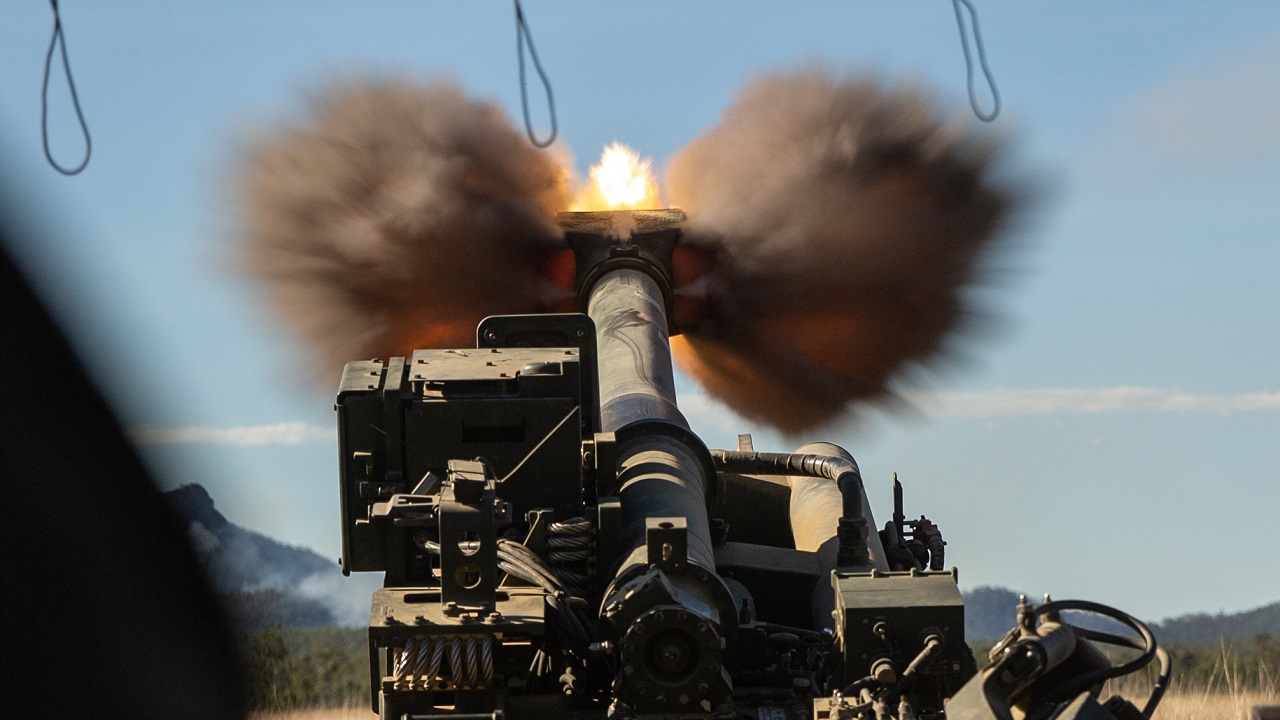A former U.S. Army Infantry Officer Explains the Artillery Duel Taking Place in Ukraine: Wow, talk about a holy smokes artillery duel. You’d be surprised to know that the Ukrainians are firing 3,000 155mm howitzer rounds per day. This does not even include all the Soviet-era 152mm shells being sent down range by the older artillery pieces the Ukrainian army also employs. This is not an easy feat, but can they keep up this pace without being constantly re-supplied by Western militaries? So far, the United States has confidence that Ukrainian forces can keep the supply of shells replenished.
Lightning Pace Requires High Skill and Effective Training
This is an impressive example of artillery perseverance and grit to pull this rate of fire off. I’ve served in a field artillery unit on the Paladin M109 self-propelled howitzer. I’ve lifted and loaded 155mm rounds and it’s a difficult day of work. Each shell weighs around 100 pounds and it takes a high level of precision among the choreographed crew to load and fire. I can’t imagine a smaller army being able to fire 3,000 rounds per day. That takes a substantial synchronization of artillery pieces and ample re-supply and other logistics activities – not to mention mechanics and technicians to keep the guns in good health. Field artillery is not known as the King of Battle for nothing.
The Big Guns Give Ukraine an Edge
Ukrainians have been making use of 155mm howitzers since May. The Pentagon dropped a news release that lauded the way the defenders are using artillery supplied by the United States and allied countries.
“We do believe that the howitzers … are having an impact … Now is that the only reason? I don’t think we would go that far to say that, but we do believe that the systems they’re getting — not just the U.S. systems but the systems from other countries — are absolutely helping them regain some momentum and to take back some territory,” a senior Department of Defense official said.
Extended Range and Highly-Accurate Shells
The Pentagon also announced that it will begin sending Ukraine precision-guided artillery shells – up to 1,000 in the latest $400 million military aid package announced on July 8. The smart rounds could be the M982 Excalibur GPS-guided round, which is an extended range and next-generation shell. The Excalibur can hit targets up to 24 miles away with a miss distance of only six feet.
The Russians Need a Break to Hide
This is bad news for Vladimir Putin’s forces who are paying a heavy price in lost men and material to Ukrainian artillery in return for taking additional territory in the Donbas region. The casualties are so high that Russia took an “operational pause” in activity during the second week of July. This is likely time that affords Russia to re-position, hide, and camouflage vehicles that have been peppered with Ukrainian artillery barrages. Coming under 3,000 rounds per day takes a toll.
French, Germans, and Slovenians Do Their Part
The Americans are supplying even more of the standard 155mm high-explosive rounds fired from the M777 towed artillery piece sent earlier to Ukraine by the Department of Defense. That’s not the only 155mm piece. France has provided a high-speed self-propelled artillery system that is mounted on a wheeled 8X8 chassis. Called CAESAR, this gun can fire up to six rounds per minute. The CAESAR truck can manage 55 miles per hour on roads, then stop and set up to fire within minutes, break down, and then speed to the next location. Couple that with the M777, and you are talking some serious firepower. The defenders are also deploying the PzH-2000 self-propelled howitzer they received from Germany and Slovenia that can fire a 155mm round every eight seconds.
So Far There Are Enough Shells
An American senior defense official told reporters on July 8 that there is still a substantial supply of 155mm shells in Ukraine.
“We’ve supplied it, other countries have supplied that,” the official said. “… We know what their use rate is, we know what their store rate is, and we’re monitoring that as we continue to supply them capabilities.”
Have a Blast
The only thing you need to tell Ukraine is to keep up the pace and don’t stop under the pressure. The United States and European allies have shown that the defenders can be trained on artillery systems they are not already familiar with. This is a testament to the “train the trainer” approach Western militaries have taken with the Ukrainians. Have Kyiv send their best officers and noncommissioned officers in the field artillery branch to be taught on the new systems, learn on the fly, rehearse constantly, and then bring that knowledge and skill back to Ukraine to train their compatriots.
This artillery approach can keep the Ukrainians in the game, but if the 155mm guns stop blazing, Kyiv doesn’t have a chance.
Now serving as 1945’s Defense and National Security Editor, Brent M. Eastwood, PhD, is the author of Humans, Machines, and Data: Future Trends in Warfare. He is an Emerging Threats expert and former U.S. Army Infantry officer. You can follow him on Twitter @BMEastwood.

